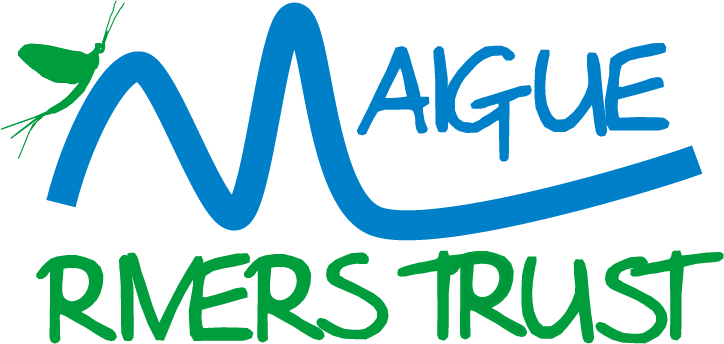Maigue Rivers Trust Newsletter 7 (2023/24)
We are delighted to present to you our latest Newsletter (2023/2024). Thank you to all our collaborators and sponsors for making our work..
We are delighted to present to you our latest Newsletter (2023/2024). Thank you to all our collaborators and sponsors for making our work..
We are delighted to present to you our 5th Newsletter. It has been great to be able to engage with more people this year, now that the COVID threat has lessened. Thank you to all our collaborators and sponsors for making our work..
The Maigue Rivers Trust is delighted to announce two events for this year's Heritage Week, which runs from Sunday August 14th to the 21st. Hospital - Mahore River - Wed 17th 7-8pm On Wednesday 17th Aug, 7-8pm we will be in Hospital down by the Mahore River. Everyone is welcome to come to the church carpark at 7pm. Our chairperson, Tom Harrington, will lead the talk about the wildlife to be found in and by the river and how we can care for our local rivers and streams. Charleville - The Glen River - Thursday 18th 7-8pm On Thursday 18th Aug, 7-8pm we will be in Charleville down by the Glen River (also known as Charleville stream). Everyone is welcome to come to the bridge by the pitch and put at 7pm. Together with Catherine Seale-Duggan of the Communities and Water Team, the MRT will talk about the wildlife to be found in and by the river and how we can care for our local rivers and..
Click here to download the latest newsletter from Maigue Rivers Trust that details our projects from the past 12 months. Many thanks to our director, Catherine Dalton, for compiling the..
Protecting Our Riverside Trees In Order to Have Healthy Rivers The Maigue Rivers Trust is very grateful to Limerick Leader's support for posting our article on riverside trees - 11/02/2021 Here in the Maigue catchment we have almost 1300km of river channel. The Maigue, Loobagh, Morningstar, Camoge, Barnakyle, Clonshire, flow through Charleville, Kilfinane, Kilmallock, Bruff, Knocklong, Bruree, Croom, Patrickswell, Adare, to name but a few. In the past two months, the Maigue Rivers Trust has received three reports from local people highlighting tree removal along sections of the rivers. Riverside trees are essential to healthy rivers but often their value is not fully appreciated until it is too late. Deteriorating water quality, habitat loss from arterial drainage schemes and loss of the natural riverside vegetation have had a detrimental impact on native wildlife and fish. At the time of the widespread drainage schemes, the..
The Maigue Rivers Trust is delighted to have secured funding from Creative Ireland Made in Limerick to work with communities in the Maigue Rivers Trust catchment who are interested in knowing more about their local natural environment. Do you want to find out about what animals, plants and insects are in your locality? We are working with biodiversity consultant, Geoff Hunt, and we want to hear from local communities who would like Geoff to visit and do a guided nature walk with them. On Saturday, 12th or Sunday 13th September (weather dependent) Geoff will meet your group (maximum 10 people) and will take you on a COVID compliant walk of your public areas and show you the secret and amazing world of autumn nature. Geoff will then compile a report and send it on to the group leader that you can then use for various community projects, e.g. tidy town assessments, Green-school projects, general nature awareness, etc. We can’t offer..
The otter is a carnivore and is an opportunistic feeder, its prey includes- eels, salmonids and crayfish. In spring, otters often eat a lot of frogs. Otters can be difficult to see, but you can tell if they are using an area as they mark their territory by leaving ‘highly scent ’spraints or droppings (marking their territory) and by their five toed foot prints. Otters spend most of their time on land on land but are seldom far from water. They can be found along the whole of the river even in the saltwater of the estuary. If an otter has been swimming in salt water they will have then find some freshwater to rinse off and clean their fur..
The mink is a carnivore that is closely related to the otter but it is an invasive species that was introduced to Ireland in the 1950’s as accidental escapees from fur farms. Minks can sometimes be confused with otters, but they are a much smaller animal. Mink can be found along the whole of the Maigue. Mink are a big threat to ground-nesting..
Grey seals and common seals can often be seen in the estuary of the R. Maigues and sometimes further..
If you are by the river at dusk you may see a bat flying very close to the waters surface; this is most likely Daubenton’s Bat. The bat uses its large feet to catch insects like midges and sedge (caddis) flies. It flies with it tail membrane very close to the surface of the water to disturb the insects then it crabs them with its feet. This behaviour is known as..

Recent Comments